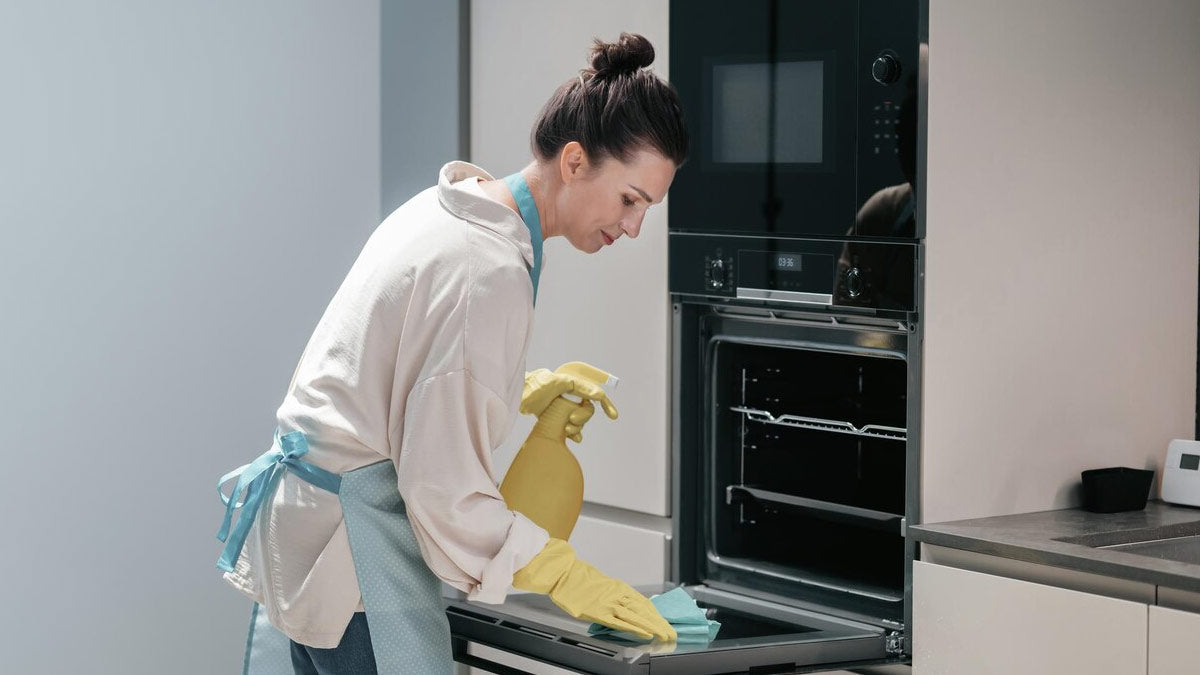Keeping a kitchen clean is no easy feat, especially when it comes to the exhaust fan. The exhaust fan is an essential component, helping to reduce kitchen odors, smoke, and grease. Over time, these fans can accumulate a substantial amount of grime, reducing their efficiency and creating unwanted odors. This begs the question: 'How to clean exhaust fan in kitchen without removing'? Let's dive into some effective methods to achieve a pristine exhaust fan without the hassle of disassembly.

Understanding the Importance of a Clean Exhaust Fan
Before we get into the cleaning process, let's understand why it's crucial to maintain a clean exhaust fan:
- Efficiency: A clean fan operates more effectively, ensuring your kitchen stays free from smoke and odors.
- Longevity: Regular cleaning can extend the lifespan of your exhaust fan.
- Safety: Accumulated grease can pose a fire hazard; therefore, cleaning is a safety measure.

Supplies You Will Need
To clean an exhaust fan without removing it, gather the following supplies:
- Screwdriver (for accessing internal parts if needed)
- Degreaser or dish soap
- Soft brush or toothbrush
- Microfiber cloth
- Water
- Spray bottle
- Vacuum with a brush attachment

Step-by-Step Guide to Cleaning
1. Safety First
Always ensure that the exhaust fan is turned off. If possible, disconnect it from the power source to avoid any electrical hazards.
2. Initial Dusting
Start by removing the surface dust using a vacuum with a brush attachment. This will help in loosening the dirt and making the cleaning process more manageable. Learn more about vacuum tips.
3. Applying Cleaning Solution
Mix a solution of equal parts water and a degreaser or dish soap. Fill a spray bottle with this mixture. Spray the solution onto the fan blades and other accessible parts. Let it sit for a few minutes to break down the grease and grime. Check out our guide on cleaning solutions.
4. Scrubbing the Grime
Using a soft brush or toothbrush, scrub the fan blades, motor, and other components. Be gentle to avoid damaging any parts.
5. Wipe Down
After scrubbing, use a damp microfiber cloth to wipe down all the cleaned parts. Ensure that all the greasy residue is removed. Repeat the scrubbing and wiping process if necessary. For more on this, visit microfiber cloth tips.
6. Drying
Allow the exhaust fan to air dry or use a dry microfiber cloth to speed up the process. Ensure everything is dry before reconnecting to the power source. Explore our tips on drying techniques.

Maintaining a Clean Exhaust Fan
Regular maintenance can keep your exhaust fan functioning smoothly:
- Clean your exhaust fan every three months.
- Regularly check for any signs of wear and tear.
- Consider using a kitchen fan filter that can trap grease and make cleaning easier.
Alternative Cleaning Method: Using Baking Soda
If you prefer a more natural cleaning method, baking soda and vinegar can work wonders:
- Make a paste using baking soda and water.
- Apply the paste to the greasy areas of the exhaust fan.
- Spray vinegar over the paste and let it bubble for a few minutes.
- Scrub and wipe down with a damp cloth.
For more tips on thorough kitchen cleaning, visit how to clean a commercial kitchen.
FAQs
How often should I clean my kitchen exhaust fan?
It's recommended to clean your kitchen exhaust fan every three months to ensure its efficiency and longevity.
Can I use a commercial degreaser to clean my exhaust fan?
Yes, a commercial degreaser is effective for cleaning kitchen exhaust fans. Ensure you follow the manufacturer's instructions and rinse thoroughly.
Is it safe to clean the exhaust fan without removing it?
As long as you ensure the power is disconnected and follow proper cleaning steps, it's safe to clean the exhaust fan without removing it.
Conclusion
Maintaining a clean exhaust fan in your kitchen is essential for safety and efficiency. By following the steps outlined in this guide, you can ensure a spotless exhaust fan without the need to remove it. Happy cleaning!
As an Amazon Associate, I earn from qualifying purchases.






Leave a comment
This site is protected by hCaptcha and the hCaptcha Privacy Policy and Terms of Service apply.